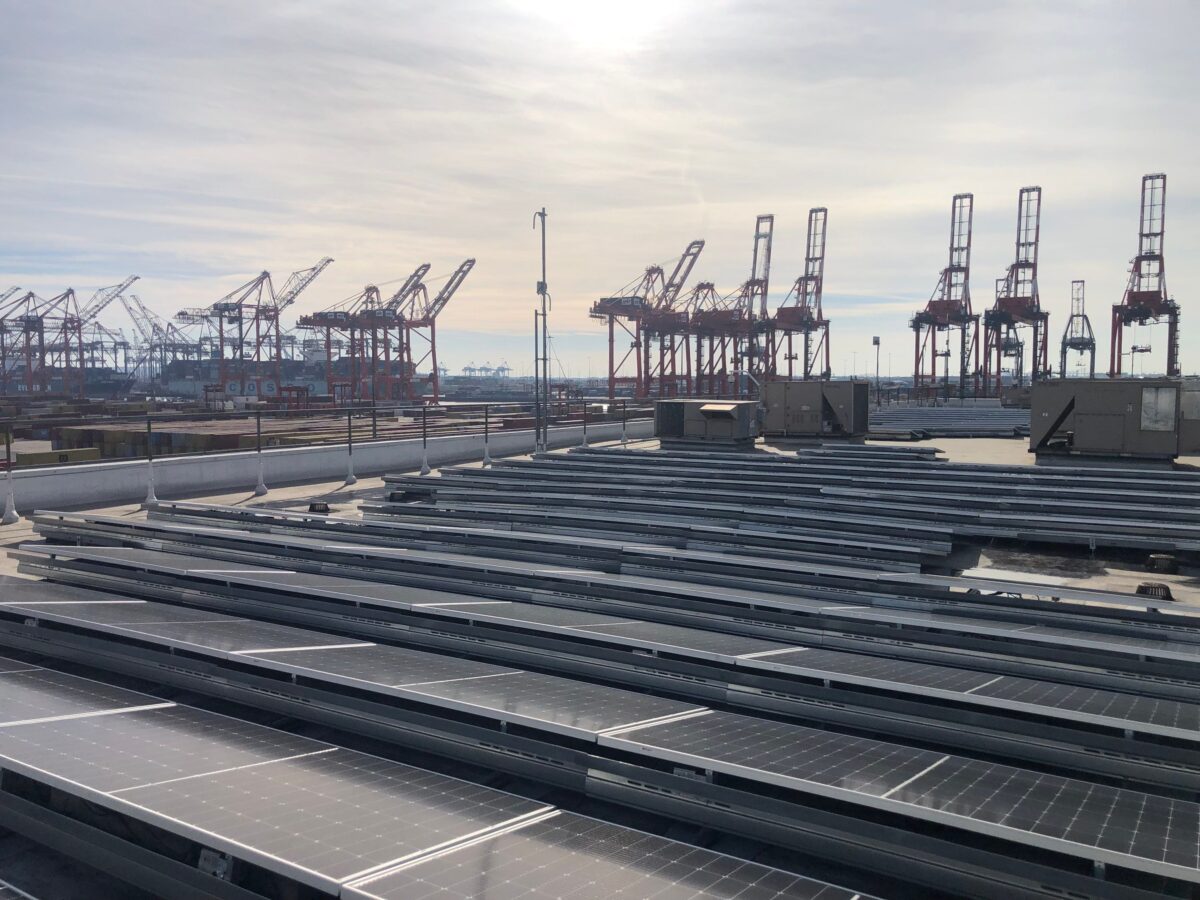The Port Newark Container Terminal, the largest container terminal on the East Coast, supplying New York City and the Northeast broadly, installed a 7.2 MW solar project engineered to integrate with the operational complexity of an active marine terminal.
Standard Solar installed the project, which is made of rooftop installations and solar canopy systems to avoid taking up ground space in the bustling port. The project provides approximately 50% of the port’s electricity demand.
The solar installer told pv magazine USA the project is contracted via a 25-year power purchase agreement with Port Newark Container Terminal. Standard Solar will operate and maintain the system under the contract.
The installation on the 320-acre terminal included 3.8 MW of elevated canopy-mounted arrays over active truck lanes and 3.4 MW of additional rooftop and parking canopy arrays. Standard Solar provided a real-time dashboard for monitoring energy production and carbon emission abatement estimates.
“From elevated canopy structures to rooftop arrays, every component was designed to work around ongoing port activity without compromising safety or performance,” said C.J. Colavito, general manager, integrated project teams, Standard Solar.
Standard Solar installed Longi solar panels on the port administration building roof on Panel Claw racking systems and used SolarEdge inverters. It also includes Longi solar panels on a carport and on several canopy structures, which had racking systems from Parasol and inverters from Chint Power Systems.
The company also installed solar panels from Talesun Solar on truck lane canopies, an outbound gate, and over the northwest parking lot. Specialized racking was provided by Parasol, and these arrays are supported by Chint Power System inverters.
“This project showcases the ingenuity and adaptability of solar to thrive in even the most complex, space-constrained logistics environments,” said Rick Berube, chief operations officer, Standard Solar.
The solar installation is part of a clean energy roadmap developed in 2011 under a lease agreement with the Port Authority of New York and New Jersey. To reduce emissions and improve efficiency, the container terminal has implemented LED lighting upgrades, hybrid engines in straddle carriers and other machinery, energy-efficiency upgrades with new electric cranes, and propane-powered yard tractors.
Jim Pelliccio, chief executive officer of the Port Newark Container Terminal said the organization is working on “responsible expansion of the port to meet the shipping needs of our growing regional and national economy, without sacrificing the health and well-being of our neighbors.”
This content is protected by copyright and may not be reused. If you want to cooperate with us and would like to reuse some of our content, please contact: editors@pv-magazine.com.









By submitting this form you agree to pv magazine using your data for the purposes of publishing your comment.
Your personal data will only be disclosed or otherwise transmitted to third parties for the purposes of spam filtering or if this is necessary for technical maintenance of the website. Any other transfer to third parties will not take place unless this is justified on the basis of applicable data protection regulations or if pv magazine is legally obliged to do so.
You may revoke this consent at any time with effect for the future, in which case your personal data will be deleted immediately. Otherwise, your data will be deleted if pv magazine has processed your request or the purpose of data storage is fulfilled.
Further information on data privacy can be found in our Data Protection Policy.